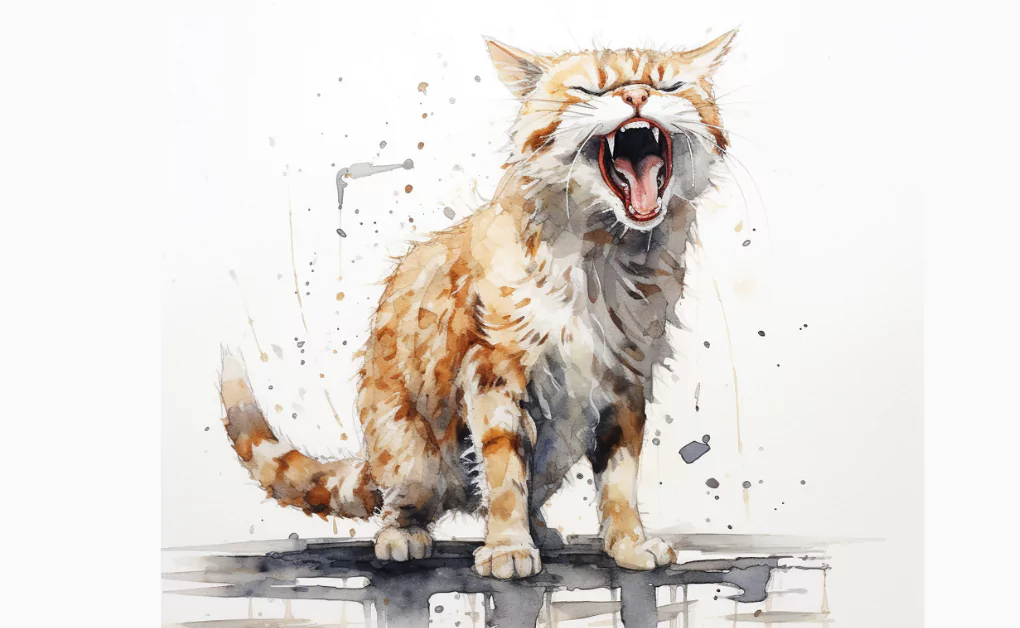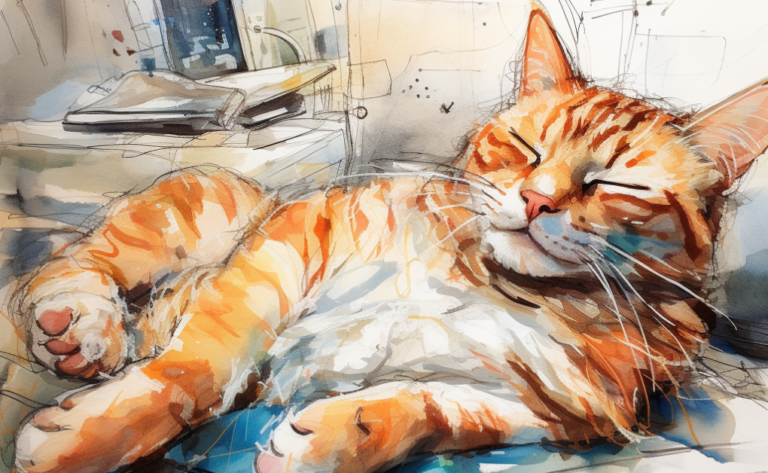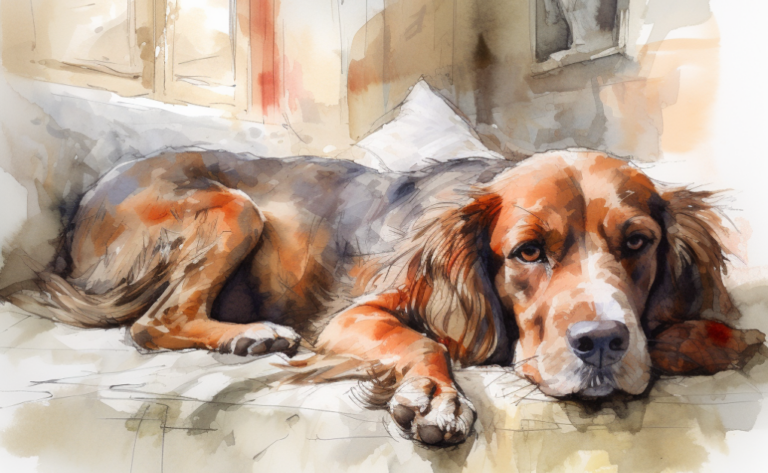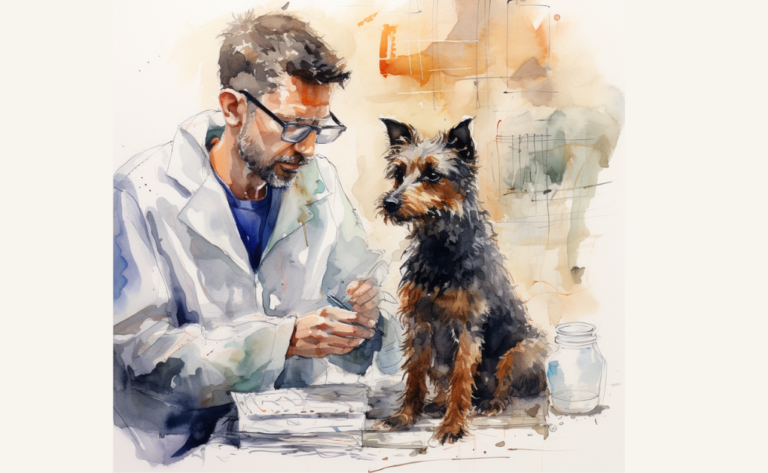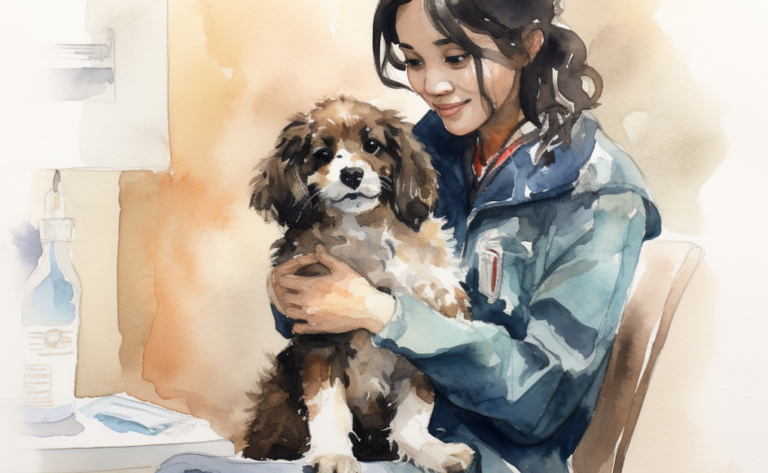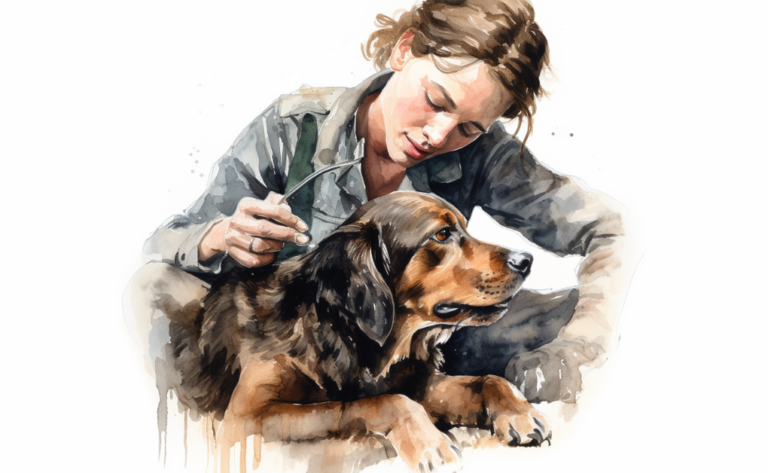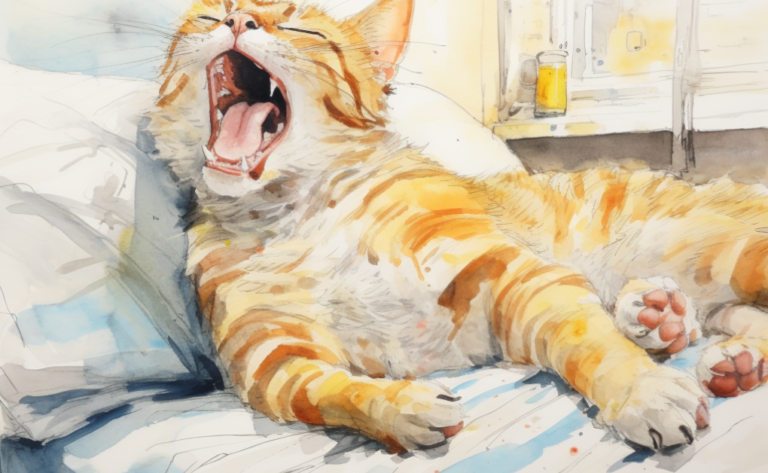What are Fractured Teeth in Cats
What is it?
How is it Treated?
Breed Predispositions
Fractured teeth can occur in cats of any breed or age and can be caused by various factors, including trauma, dental disease, and other underlying health problems.
Introduction
When Sophie, a lively Maine Coon, suddenly lost interest in her favorite chew toys and struggled to eat her food, her owner, Paul, noticed that something was off. Worried about Sophie’s well-being, he promptly took her to the veterinarian for a thorough oral examination. Upon inspection, the veterinarian discovered that Sophie had fractured teeth, a dental issue that can affect cats of all breeds and ages.
Cats’ teeth comprise enamel, a protective layer for the tooth and pulp tissue, and dentin, which lends structural support. If these two layers detach, it weakens the tooth, making it prone to fractures. This vulnerability is particularly evident in cats who frequently bite down on objects, leading to damaged or broken cat teeth over time.
Fractured teeth in cats manifest when a tooth’s integrity is compromised, affecting either the crown, the root, or in some cases, both. These fractures can cause discomfort and lead to potential cat complications if left untreated. In uncomplicated fractures, where only the enamel is broken, or complicated fractures involving damage to the pulp of the tooth, immediate attention from a veterinary dentist is essential. In the case of a deciduous tooth, or “baby tooth,” fractures may not be as concerning, but fractures in an adult cat tooth require prompt veterinary attention. This ensures that fractured teeth are appropriately managed, maintaining the cat’s dental health and overall well-being.
Types of Fractured Teeth in Cats
Fractured teeth in cats can be classified into several types, depending on the extent and location of the fracture. Here are some common types of fractured teeth in cats:
Enamel Fracture
This is the mildest form of tooth fracture, where only the outer layer of the tooth, the enamel, is damaged. It typically does not cause pain or expose the sensitive inner layers of the tooth.
Uncomplicated Crown Fracture
Uncomplicated fracture, the enamel and the dentin (the layer beneath the enamel) are affected, but the fracture does not extend into the tooth’s pulp chamber. The tooth may be sensitive to touch or temperature changes.
Complicated Crown Fracture
Complicated fracture involves damage to the enamel and dentin and extends into the tooth’s pulp chamber, exposing the sensitive pulp tissue. It can cause pain, sensitivity, and potential infection if left untreated.
Root Fracture
This type of fracture occurs within the tooth’s root, which is not visible. Root fractures can be further classified as horizontal or vertical fractures and may require different treatment approaches depending on the severity.
Crown-root Fracture
This combines a crown fracture and a root fracture, involving damage to both the visible part of the tooth and the root. Treating it can be challenging and may require extraction or specialized dental procedures.
The type of fractured tooth in cats can vary depending on the cause and severity of the injury. It is essential to have a veterinarian evaluate and diagnose the specific type of fractured tooth to determine the most appropriate treatment approach.
What Causes Fractured Teeth in Cats?
Fractured teeth in cats can stem from various sources, each associated with specific contributing elements. Here are some principal reasons for fractured teeth in cats:
- Trauma: Significant factors leading to fractured teeth in cats include physical impacts such as accidents, falls, or rough play. Cats who actively engage in aggressive play, confront other animals, or endure any external trauma, such as motor vehicle accidents, are more likely to suffer from tooth fractures.
- Dental Conditions: Dental conditions, including periodontal disease or tooth decay, can compromise the tooth structure, making it susceptible to fractures. Periodontal disease provokes inflammation and the loss of supportive structures around the tooth, resulting in instability. Tooth decay, also known as dental caries, erodes the tooth structure and makes it vulnerable to fractures.
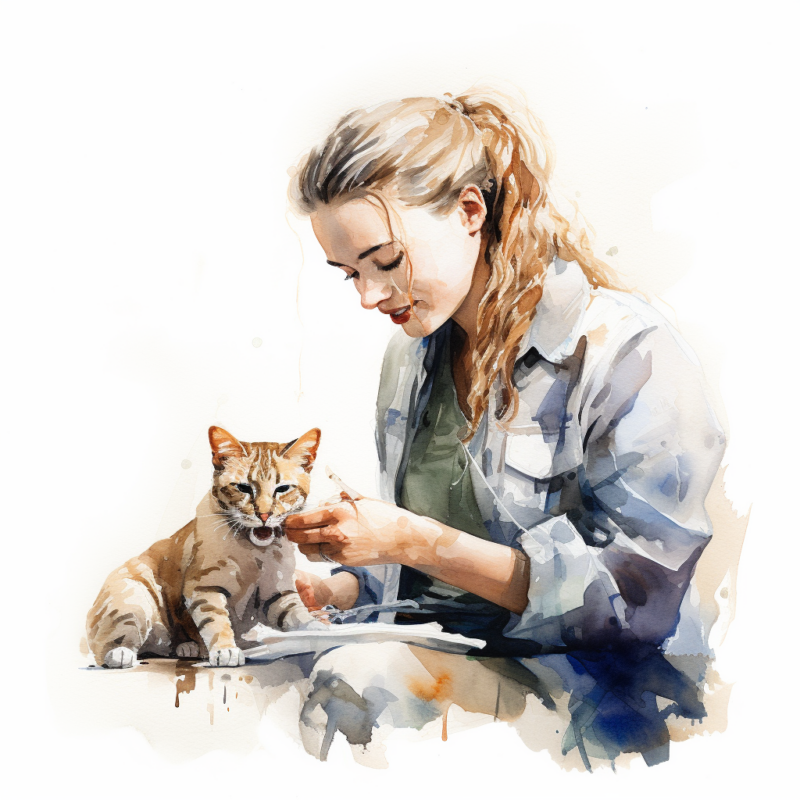
- Chewing on Hard Objects: Cats may chew on hard objects due to curiosity or a desire to alleviate discomfort from dental issues or teething. However, gnawing on hard materials like bones, rocks, or toys can put excessive pressure on the teeth, potentially causing fractures.
- Age and Tooth Wear: As cats age, their teeth naturally wear down and become more susceptible to fractures. Older cats may experience weakened tooth enamel or other age-related dental changes that elevate the risk of fractures.
- Oral Diseases or Abnormalities: Specific oral diseases or abnormalities, like resorptive lesions or tooth malformations, can compromise the tooth structure, making it prone to fractures.
- Genetic Factors: Some cats may be genetically predisposed to tooth fractures. Certain breeds may be more susceptible to unique dental traits or structural abnormalities.
It’s crucial to remember that a combination of factors can contribute to tooth fractures in cats. For instance, dental diseases can weaken the tooth structure, leaving it more prone to fractures caused by trauma or chewing on hard objects. In the event of a fracture, bacteria have a secure hiding place in the exposed pulp, and the body’s immune system may not effectively combat them, leading to an abscess. Regular dental care, routine veterinary examinations, and appropriate dental hygiene practices can significantly mitigate the risk of fractures in cats.
Symptoms of Fractured Teeth in Cats
Identifying fractured teeth in cats can prove difficult, as cats are adept at concealing signs of discomfort or pain. Nonetheless, some subtle indications may suggest that your cat’s teeth are fractured. Here are some common signs to be mindful of:
- Altered Eating Habits: A cat suffering from fractured teeth may experience discomfort while eating, leading to noticeable changes in eating habits. This might manifest as a decreased appetite, challenges with chewing, or a newfound preference for softer foods.
- Mouth Pawing: If a cat has a fractured tooth, it may paw at its mouth or demonstrate heightened sensitivity around the affected area.
- Increased Salivation: Discomfort due to fractured teeth can trigger excessive salivation or drooling in cats, which is often an outward sign of dental problems.
- Persistent Bad Breath: If fractured teeth become infected or decay, they can result in halitosis or persistently bad breath. This foul odor may remain even after regular dental care.
- Behavioral Alterations: Cats experiencing dental pain may exhibit changes in behavior, potentially becoming irritable, withdrawn, or avoiding social interactions.
- Inflamed or Swollen Gums: The irritation caused by fractured teeth can lead to inflamed gums. Look out for redness, swelling, or bleeding around the tooth.
These signs might also signify other dental issues or health conditions, like resorptive lesions or a tooth root abscess. Sometimes, facial swelling can be noticed on the opposite side of the mouth where the cavity is exposed. Suppose you suspect that your cat has fractured teeth or is dealing with any dental complications. In that case, a consultation with a veterinarian is needed since these clinical signs must be treated promptly.
Diagnosis of Feline Teeth Fracture
Diagnosing fractured teeth in cats is a multi-step process that identifies the problem and can help recognize other dental issues, such as periodontal disease, oral tumors, and tooth resorption.
Clinical Examination
The first step is a physical examination. The veterinarian may be able to see fractures in the teeth during an oral exam. Often, fractures are more likely to occur in certain teeth, such as the carnassial tooth, located at the back of the mouth. Symptoms that may indicate a tooth fracture include drooling, eating discomfort, pawing at the mouth, or oral bleeding.
Sedation or Anesthesia
To thoroughly examine the pet’s tooth discomfort, sedation or general anesthesia is often required. This allows the veterinarian to safely inspect all surfaces of the teeth, including the inside of the tooth and the area around it.
Dental Probe and Explorer
A dental probe and explorer are used during the examination. These tools assess the depth and extent of the fracture and determine if the pulp cavity, the living part of the tooth, is exposed or infected.
Dental Radiographs (X-rays)
Dental X-rays are critical in diagnosing dental fractures and other dental issues like periodontal disease and oral tumors. An X-ray of the tooth can show the tooth’s visible part, the root structure, and the surrounding bone. This radiograph can reveal damage to the pulp or root, an abscess (a pocket of infection), or a condition called resorption, where the body breaks down and absorbs the tooth structure.
Vitality Testing
In some cases, the veterinarian might perform a vitality test, which checks whether the tooth’s pulp is still alive. This could involve pulp sensibility testing or electric pulp testing, which is more common in human dentistry than veterinary practice.
Once the diagnosis of a tooth fracture has been confirmed, the veterinarian can discuss treatment options. These will depend on the fracture’s type and extent, the tooth’s condition and surrounding tissues, including the tip of the root, and the cat’s overall health.
Treatment of Feline Teeth Fracture
Dental Bonding or Sealants
Composite resin, or dental bonding or sealants, is the preferred treatment for uncomplicated crown or enamel-only fractures in cats. The treatment involves applying the composite resin material to the fractured area, which is then meticulously shaped and polished to regain the tooth’s appearance and functionality. This method is instrumental in shielding the tooth from additional damage and mitigating sensitivity.
Dental Crown Restoration
Dental crown restoration may be necessary for more severe cases like fractures involving the dentin or pulp exposure of the tooth applying. This process involves removing the tooth’s impaired portion and placing a prosthetic crown over the remaining healthy structure. The crown strengthens and safeguards the tooth and restores its functionality and aesthetics.
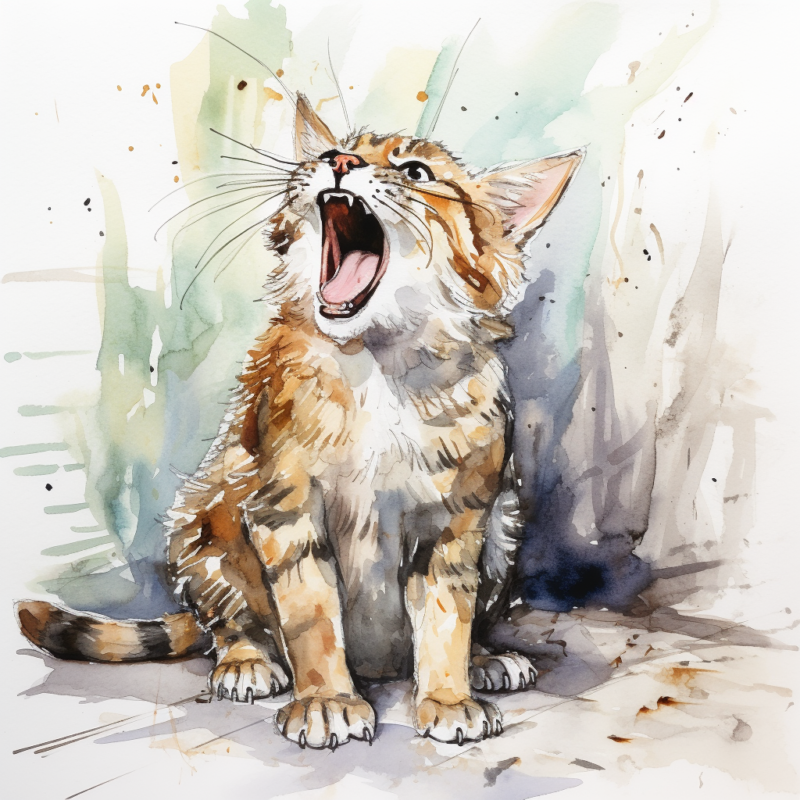
Tooth Extraction
When the fracture is comprehensive, and the tooth is beyond salvaging, tooth extraction could be the recommended course of treatment. Usually carried out under anesthesia, this procedure involves the veterinarian carefully removing the affected tooth. Extraction might also be necessary if the fracture has resulted in significant pain or infection, potentially leading to conditions like feline tooth resorption.
Antibiotics and Pain Management
Irrespective of the treatment method chosen, antibiotics may be prescribed to prevent or combat any associated infections and manage the risk of infection. Pain management medications might also be necessary to alleviate any discomfort or pain endured by the cat during the healing phase.
Ongoing Dental Care
Post-treatment, ensuring good oral hygiene and continual dental care for your cat is crucial. This involves regular dental check-ups, professional cleanings, and at-home brushing of your cat’s teeth. Preventive measures such as these can aid in minimizing the risk of future dental issues and maintaining your cat’s dental health.
Veterinarians can alleviate pain, prevent further complications like vital pulp therapy and restore oral health and function by providing suitable treatment for fractured teeth in cats. This may include procedures such as a vital pulpotomy or more advanced oral surgery. The fracture’s severity and extent determine treatment choice, the cat’s overall health and individual needs. It should always aim to prevent future bacterial build-ups in the sensitive tissue inside the tooth.
Prevention of Feline Broken Teeth
To mitigate the risk of fractured teeth in cats, pet guardians can undertake the following steps:
- Frequent Dental Inspections: Coordinate frequent dental inspections for your cat with a veterinarian. They possess the expertise to evaluate your cat’s dental well-being, pinpoint potential dental problems, and dispense suitable treatments or advice. Many veterinarians recommend this as a fundamental step.
- Establishing Dental Care Routine: Initiate a dental care routine for your cat, which could incorporate regular tooth brushing. Utilize a toothbrush and toothpaste designed for pets to clean your cat’s teeth at least several times a week. This aids in eliminating plaque and averting the accumulation of tartar that can debilitate teeth.
- Diet Beneficial for Dental Health: Ensure your cat consumes a balanced diet that bolsters dental health. You may want to consider integrating dental-specific diets or treats into their routine that aid in managing plaque and tartar accumulation.
- Avoidance of Hard Toys and Chews: Be selective of the toys and chews you provide for your cat. Steer clear of overly hard or stiff materials that could potentially result in tooth fractures. Opt for softer or dental-specific toys that are designed to boost dental health.
- Supervising Chewing Habits: Closely monitor your cat’s chewing habits and intervene if you observe them persistently chewing on hard objects or unsuitable items. Redirect their chewing towards suitable toys or treats.
- Routine Veterinary Examinations: Plan routine veterinary examinations for your cat to monitor their overall health. This allows the veterinarian to detect dental issues early and provide suitable preventive measures or treatments.
- Immediate Veterinary Assistance: In case you suspect any dental issues or notice alterations in your cat’s behavior related to eating or chewing, seek immediate veterinary assistance. Early intervention can aid in preventing dental problems and potential tooth fractures, thereby helping to prevent future occurrences.
By incorporating these preventive measures, pet owners can lower the risk of fractured teeth in cats and maintain their overall dental health. Regular dental care and vigilance are crucial in preventing dental issues, a sentiment many veterinarians echo and can still be seen as a priority in promoting a healthy mouth for your feline companion.
Frequently Asked Questions
Disclaimer: The information provided on this veterinary website is intended for general educational purposes only and should not be considered as a substitute for professional veterinary advice, diagnosis, or treatment. Always consult a licensed veterinarian for any concerns or questions regarding the health and well-being of your pet. This website does not claim to cover every possible situation or provide exhaustive knowledge on the subjects presented. The owners and contributors of this website are not responsible for any harm or loss that may result from the use or misuse of the information provided herein.

